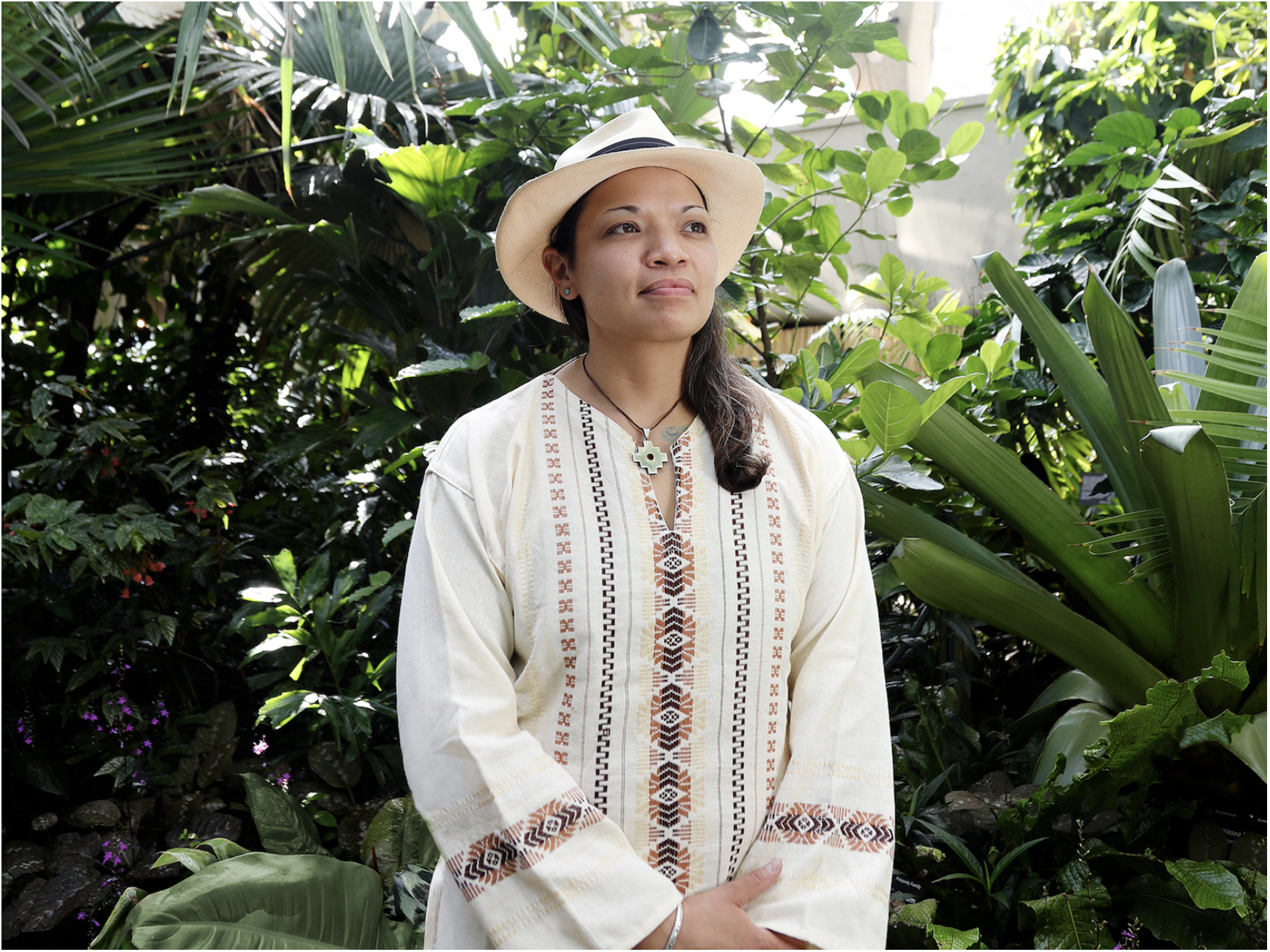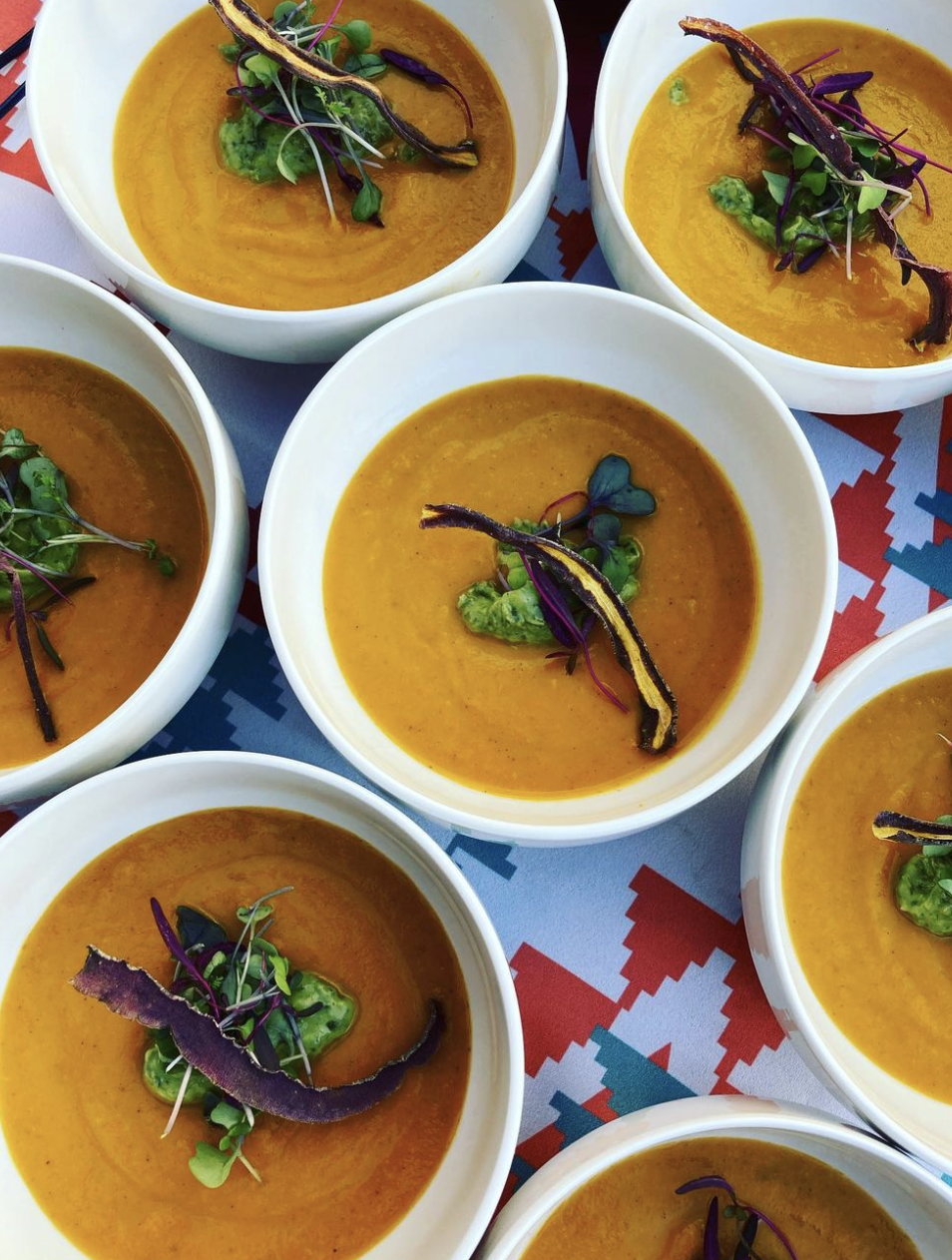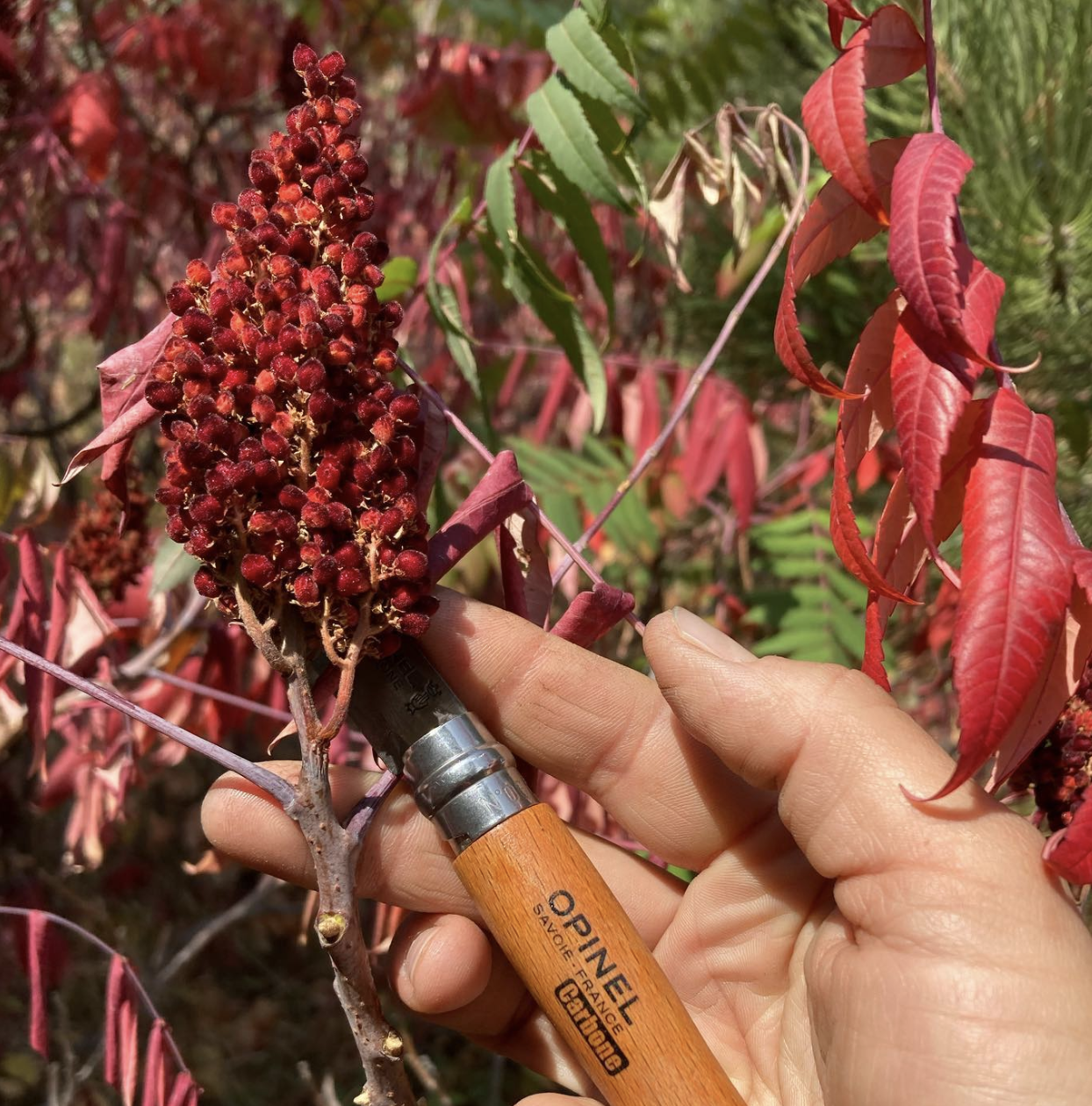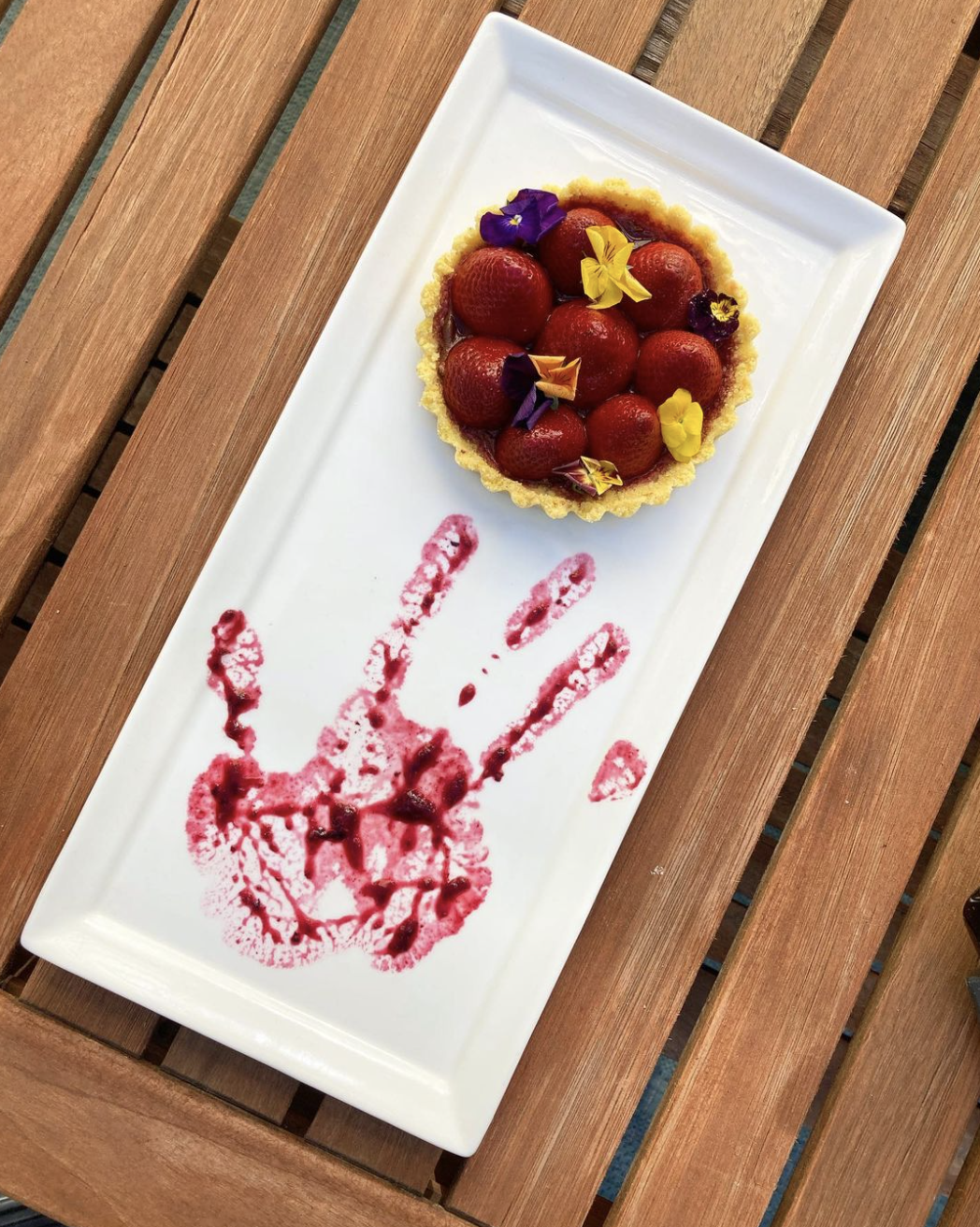Sense
June 30, 2022
Community Spotlight: Meet Chef Andrea Murdoch of Four Directions Cuisine and featured Chef of MCA Denver’s Dinner Society.
On Saturday, July 9, 2022, MCA Denver’s Dinner Society is excited to welcome Chef Andrea Murdoch of Four Directions Cuisine, for an evening of culinary artistry and delights. Inspired by her ancestral roots and current landscape, Chef Andrea Murdoch's dishes are an exploration of Indigenous ingredients with a modern presentation.
Dinner Society is MCA Denver’s pop-up rooftop dinner program that combines culinary artistry with visual arts to create a truly intimate and unique experience. For ticket information, click here.
I had the pleasure of emailing Andrea to learn more about her process and creating more representation in fine dining cuisine while honoring the native nourishment of the land.

Hi Andrea, how are you doing?
I’m great! I’m stoked to be collaborating with the MCA again.
Four Directions Cuisine is a Denver-based catering company that focuses on Indigenous ingredients from the Americas that you uniquely curate into contemporary elevated dishes. What was your inspiration in starting Four Directions Cuisine?
In 2015, I started exploring the possibility of a South American-themed restaurant in Milwaukee, WI where I was living with my husband at the time (we have since divorced). In the process of writing a business plan, I quickly started gravitating toward the original foods of South America, which led to me specifically exploring pre-colonial foods from all over the Americas. I drove out to Oneida Nation to learn from the women running the cannery, and my late friend Jeff, who oversaw the farm operations at the time. I was immediately welcomed into their community which I soon came to understand was MY community too. I am not Oneida, but I am Andina and as an Indigenous woman from the South, I was seen as a relative. It was the first time I felt a cultural sense of community in my life.
I was adopted by Americans as a baby; my father served in the Army and he and my mother were stationed in Venezuela while they were trying to adopt a child. Something in my adopted brain lit up when I started educating myself on Indigenous foods. I had made a connection that trying to relearn Spanish and learning how to make Latino dishes never gave me. I didn’t know that I had to go further back until I had done so and the result has been Four Directions Cuisine.

Food is medicinal in its components, how have you found cooking with ingredients with such ancestral roots has helped in understanding your own background?
As I work with various ingredients from the mountain regions in South America, I try to notice what I gravitate toward, where my comfort level naturally lands, what ingredients feel second nature to work with, and what my palette naturally enjoys. It makes me wonder what those biologically and ancestrally connected to me consumed in their lifetimes to result in my natural tendencies when consuming food. It’s strange to feel connected to something you have never experienced before but through generations of traditional foods, I somehow feel that connection and it’s weirdly beautiful to experience. It’s like deja vu.
How do you tell a story with the dishes you create?
Some of my dishes are created through a typical research and development process. I want to learn more about an ingredient so I do a little research and start working with the item. I might try different cooking techniques, preservation methods, dehydrating and pulverizing to use in baking, etc…. I’ll create a dish that turns into a conversation piece so that I can share the story of that ingredient. People are usually surprised to learn that potatoes originated in South America even though they are often associated with Irish cuisine.
On the other side of that, I bring some of my own personal stories to life in an abstract way through food. A walk through an open air market in Guatemala where I had the freshest cup of juice in my life inspired a dish called “City Walk” thirteen years later. The young man operating the juice stand juiced carrots and oranges to order and I still remember the flavor distinctly. In creating a dessert that centered around this, I made a carrot orange jelly, a carrot orange curd, chocolate ganache, and a deconstructed concha essentially creating a deliciously whimsical puzzle on a plate.
How have the ingredients native to Colorado and the Southwest influenced your dishes?
Quite a bit actually! There is a fair amount of crossover in crops that do well in our climate zone in comparison to that of a similar altitude in the Andes. The added bonus that I get is being in a mountainous region that is also a desert. I love the ingredients more prominent in the four corners states than in other regions in which I’ve lived. I have really enjoyed incorporating blue corn into my cuisine. Different varietals of corn come with their own unique flavor profile and the many types of blue corn never cease to impress me in my cooking adventures. The blue corn I consistently use in my cookies is from the Ute Tribe in Southwestern Colorado.
Bison has quickly become one of my favorite animal proteins. I only use pre-colonial meats in my business but I also rarely consume them in my personal meals at this point. I prefer bison over beef, turkey over chicken, and elk tacos are now one of my favorite dinners to make at home. I also have an affinity for rabbit, especially when it’s braised for hours in flavors associated with Latino cuisine. Excuse me while I go experiment in my kitchen.
How has foraging some of your ingredients influenced the thought process behind your food? How has it made you better understand the quality or redefine the meaning of “locally sourced”?
Foraging is its own level of sourcing locally. What I find in abundance one season might become damaged and more sparse in future seasons. Any number of elements can shift the harvest from year to year. Foraging has taught me a very specific appreciation for what is naturally available. We live in a convenience society where we expect to get all the items on our grocery list from one shop, maybe two. As chef’s, we have vendors who deliver to our kitchen doors. Foraging strips away convenience and results in hours, days, weeks, and months-long of processing. I bundle and air dry some plants instead of placing them in my dehydrator which takes months instead of hours. I like blending the two because I am a busy modern businesswoman who keeps it moving but when I see herb bundles tied up throughout my house it reminds me to slow down and operate more intentionally at times. I am always blending ancient with modern in my dishes and that starts with the raw ingredients.

What does the process of foraging give to you?
It grounds me and connects me to the land, to Pachamama. It’s like a walking meditation for me. I communicate with myself and my ancestors. I wonder while I wander. It often brings me peace.
What should guests look forward to for Dinner Society?
This prefix menu is very much along the lines of what I present at my fundraising dinners. The menu will help you experience the pre-colonial Andes, a blend of the Great Plains with a Latin twist, better understand the Three Sisters, and end in the Andes again. There is always a bit of playfulness and lightness with my menus as well which I think folks will see in the second and fifth courses.

What are you excited about for this year?
I’m excited to keep pushing my business forward and grow this year. Folks can find me at a couple of farmer's markets this season with my blue corn cookies and Inka trail mix which I will be posting on my Instagram account. I also sell wholesale to a few Denver area shops including Ruby’s Market and the MCA cafe. I also have a lot of really unique and inspiring projects and collaborations in the works and I’m just incredibly grateful for all of those opportunities. I have the pleasure of working with chefs, other creatives, and activists from coast to coast and I plan on continuing that incredible energy throughout my career.
I’m very excited to have published my first book titled #BringThemHome with the second in the series on its way this fFall. They're small books under twenty pages but they are beautiful coffee table books with professionally shot photographs of my dishes. Each dish is paired with facts and statistics about the Indian boarding school system. The sale of these books benefits the work that NABS (National Native American Boarding School Healing Coalition) does to help victims and their families heal.
Anything I missed? Please share!
I launched an experimental farming project this season called Pachamama5280. I have a small garden plot where I am growing predominantly pre-colonial crops and facilitating or leading workshops in growing, harvesting, preserving harvest, and seed saving for the future. Starting in the second season I plan to incorporate lesser-known crops of the Andes to draw parallels between high-altitude farming of the Andes with that of the Rockies. I want to show how we can fight food insecurity with community gardens, seed saving, and other less frequently taught practices.